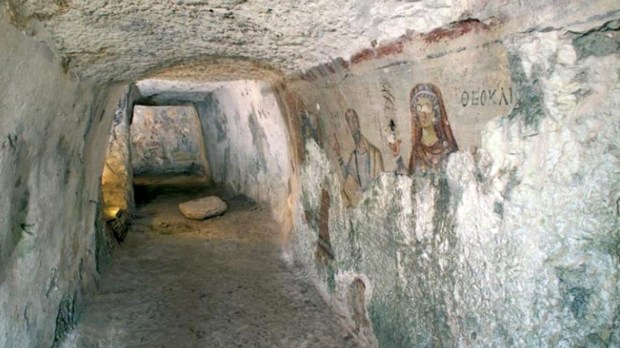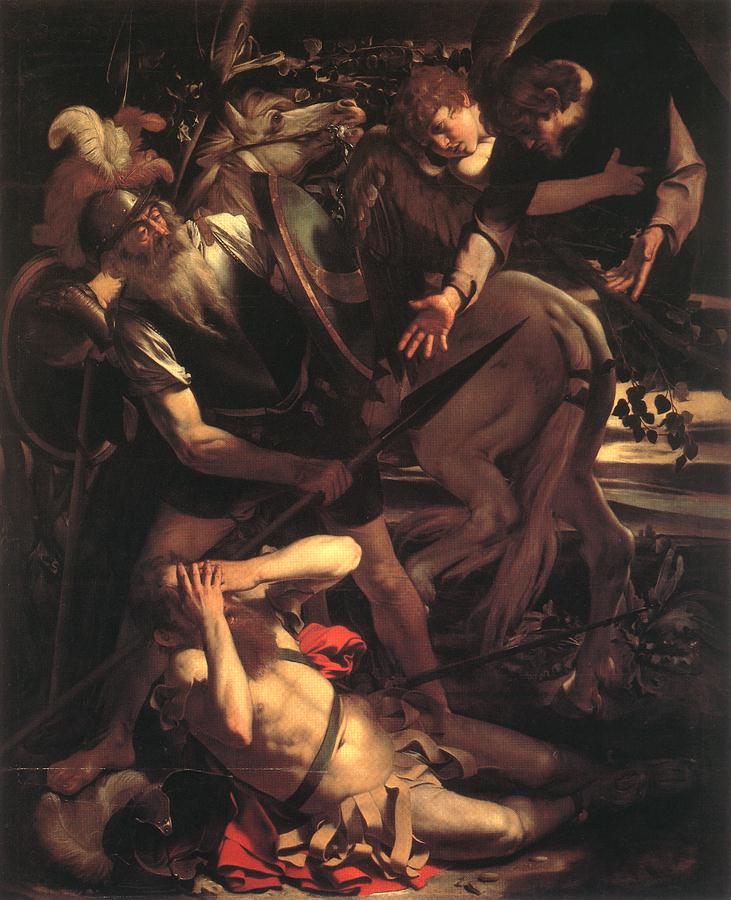The book of Acts (22, 21) describes Paul’s apostolic mission in simple yet comprehensive terms: he was to be sent “far away to the gentiles.” The word “gentile,” derived from the Latin gentilis, meaning belonging to a people or nation (from gens, which can be translated as clan, tribe, people, or family) is a term that, when found in Scripture, usually means “someone who is not a Jew.” That is, Paul was to be sent to non-Israelites. That’s a somewhat vast demographic.

Read more:
A map of Paul’s missionary journeys, London-Underground Style
A comprehensive map of all the journeys taken by St. Paul in his lifetime is yet to be completed. But what we know for sure is that Paul, who used to be called by his Jewish name Saul of Tarsus before converting to Christianity, spent about 30 years sailing around the Mediterranean basin and visiting what were considered to be the major cities of his time.
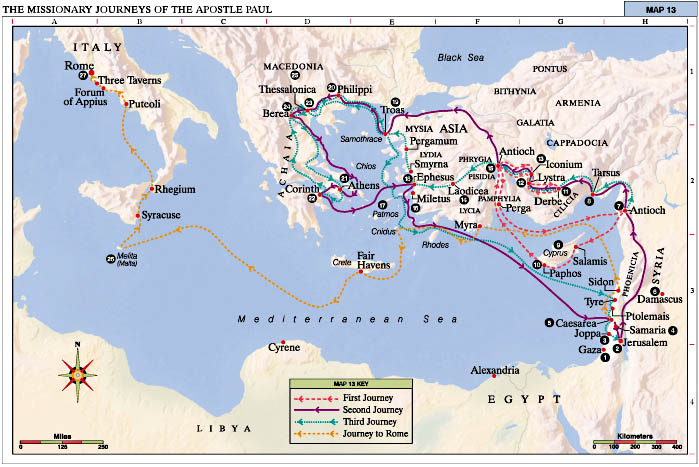
Sources disagree on an exact list of locations that Paul visited during his lifetime, but what’s sure is that during the three journeys described in Acts 13-14, Acts 15-17 and Acts 18-20 he visited many historical cities that are considered the backbone of Western civilization. From Athens to Corinth, passing through Antioch and Ephesus, here is a summary of Paul’s travels, including an indication of where those locations are on today’s map.
First trip
What’s considered Paul’s “first journey” started in the year 45 and ended in 49. Together with Barnabas, a Cypriot Jew converted to Christianity, Paul traveled across the island of Cyprus, Barnabas’s homeland, preaching the Gospel in several synagogues. They then set sail from Paphos, on the southwest coast of Cyprus, and reached the port of Perga, in Anatolia, modern-day Turkey.
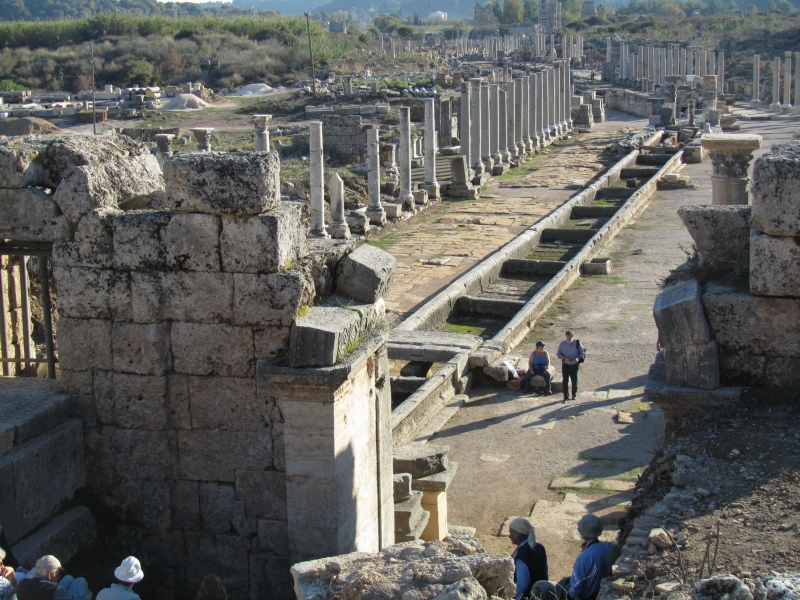
From Perga they finally reached Antioch of Pisidia, where Paul began to spread the word to the local Jewish community. Initially, his message was very well received, leading to an invitation to speak during Sabbath (the holy day), but part of the community soon turned envious about the strong popularity enjoyed by a foreign preacher and eventually managed to push Paul out of the city.
Paul and Barnabas then left for Konya, a city just south of Ankara, in present-day Turkey, but were forced to leave again, this time for the nearby town of Lystra. Here Paul healed a sick man and the local pagan community began to believe he was sent by God. But soon enough, the same people who contested him in Konya reached Lystra and instigated a group of locals to stone Paul, forcing him to flee. He then reached the city of Derbe, also in modern-day Turkey, and from there back to Lystra, Konya and finally Antioch of Syria on the Orontes, a city of ancient Syria now in modern-day Turkey, where his journey originated. Here Paul reports that, through his message, many pagans got to know the word of God.
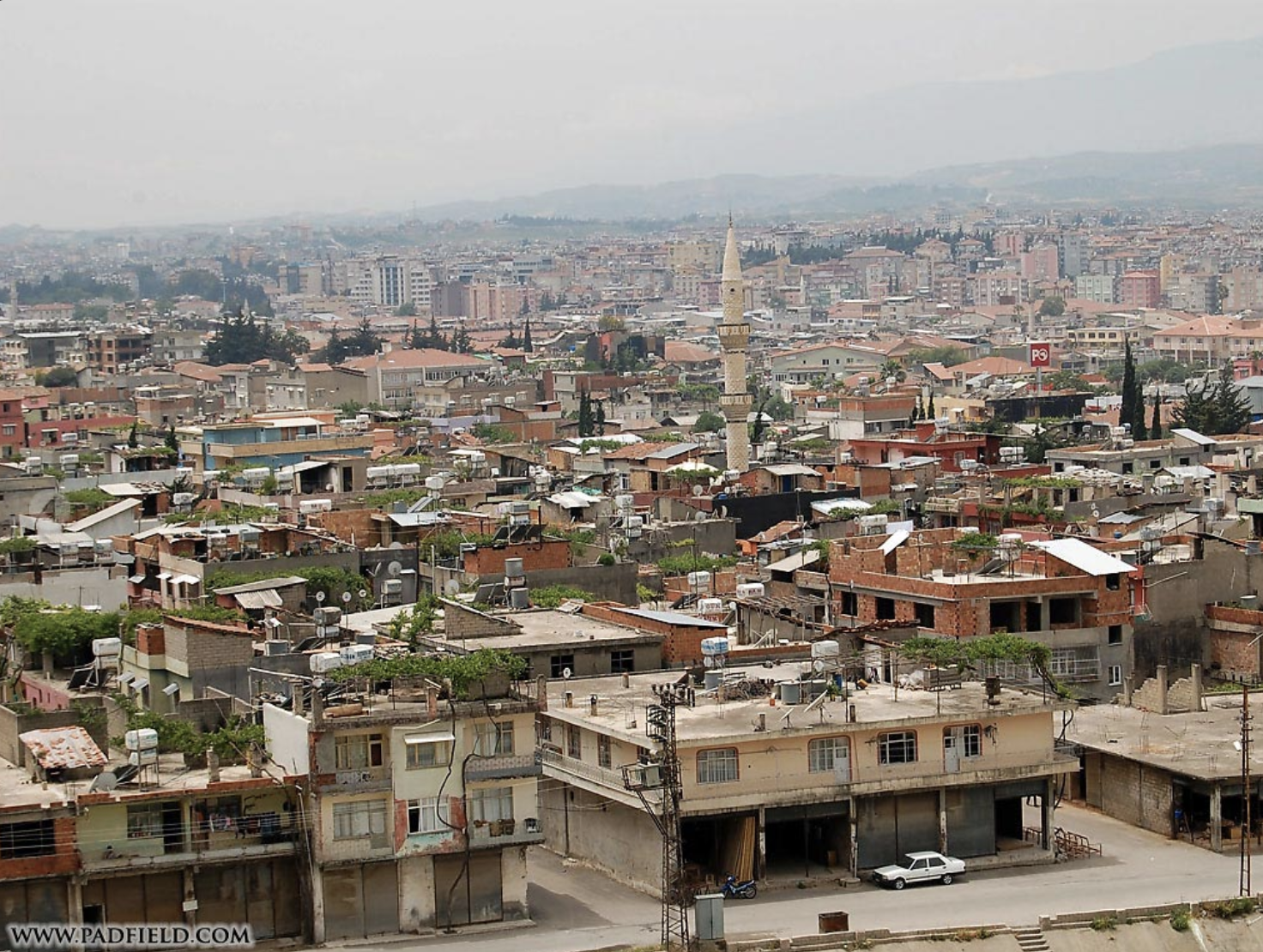
Second trip
Paul’s second journey started in the year 49 and ended in 52. This time, Paul hit the road to check back on those early Christian communities he helped found during his first trip.
He was accompanied by Silas, a leading member of the early Christian community, and Timothy, the son of a Greek man who was a dear companion to Paul. The group headed to Lystra, then through Phrygia, an ancient kingdom on the Sangarios River in modern day Turkey; then to Galatia, an area in the highlands of central Anatolia, also in present-day Turkey, that was inhabited by Gallic people of the Hellenistic period, and finally to Troad, a city in north-west Anatolia, present-day Turkey.
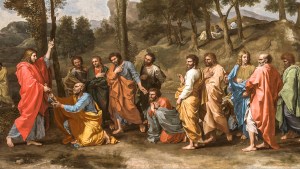
Read more:
Whatever happened to the Twelve Apostles?
Here, Paul had a vision of a man asking him to bring the Gospel to Macedonia, and then set off to reach the European mainland for the first time. By way of Samothrace, a Greek island in the northern Aegean Sea, and Neapolis, known today as the Greek city of Kavala, they reached Philippi, a Roman city in the first district of Macedonia, which today stands as one of Greece’s UNESCO World Heritage Sites.
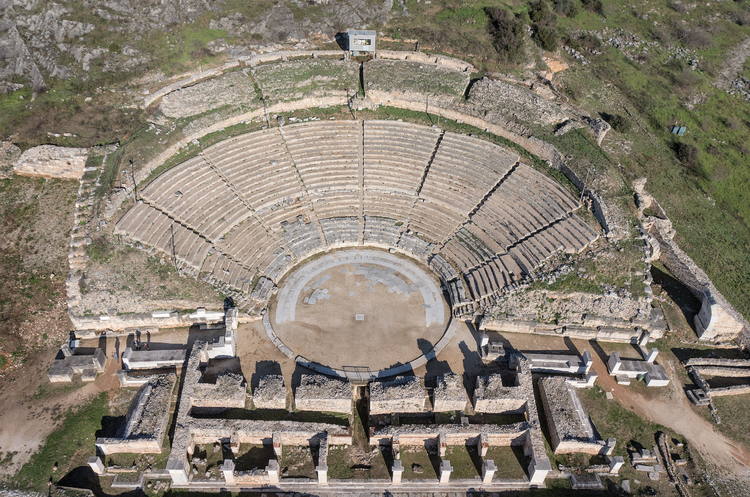
Here, Paul was hosted by Lydia, a woman who worked as a dealer in purple cloth from the city of Thyatira. But soon enough, a group of hostile locals pushed authorities to arrest Paul and his companions. However, thanks to a providential earthquake, the group managed to escape Philippi’s jail. Eventually, local magistrates learned that Paul and his travel companions were Roman citizens and officially let them free. The Philippian community soon grew to become an important Christian center, to which Paul later addressed the Epistle of Paul to the Philippians.
After Philippi, the group reached Thessaloniki, in present-day northern Greece, where they were hosted by Jason, a Jewish man who had converted to Christianity. Here, even if his mission was somehow successful, Paul was quickly forced to leave after a group of local Jews reported his evangelization activities to local pagan authorities.
They then left for Berea, an important port city, now known as Veria, in Macedonia, north of Greece, but the same group that kicked them out of Thessaloniki soon caught up with them and pushed them to leave Berea as well.
The group hit the road once again and reached Athens, which had been severely damaged by Roman attacks in 146 B.C. but was still considered the capital of philosophy and knowledge of what was then the known world. Here Paul engaged in conversation with many public intellectuals in both synagogues and public squares and was eventually invited to give a speech to Athenian citizens from the Aeropago, a marble hill just above the Acropolis. According to Luke (Act 17, 11-33) it is here that Paul proclaimed his famous speech about “the Unknown God” to to the pagan thinkers of Athens.
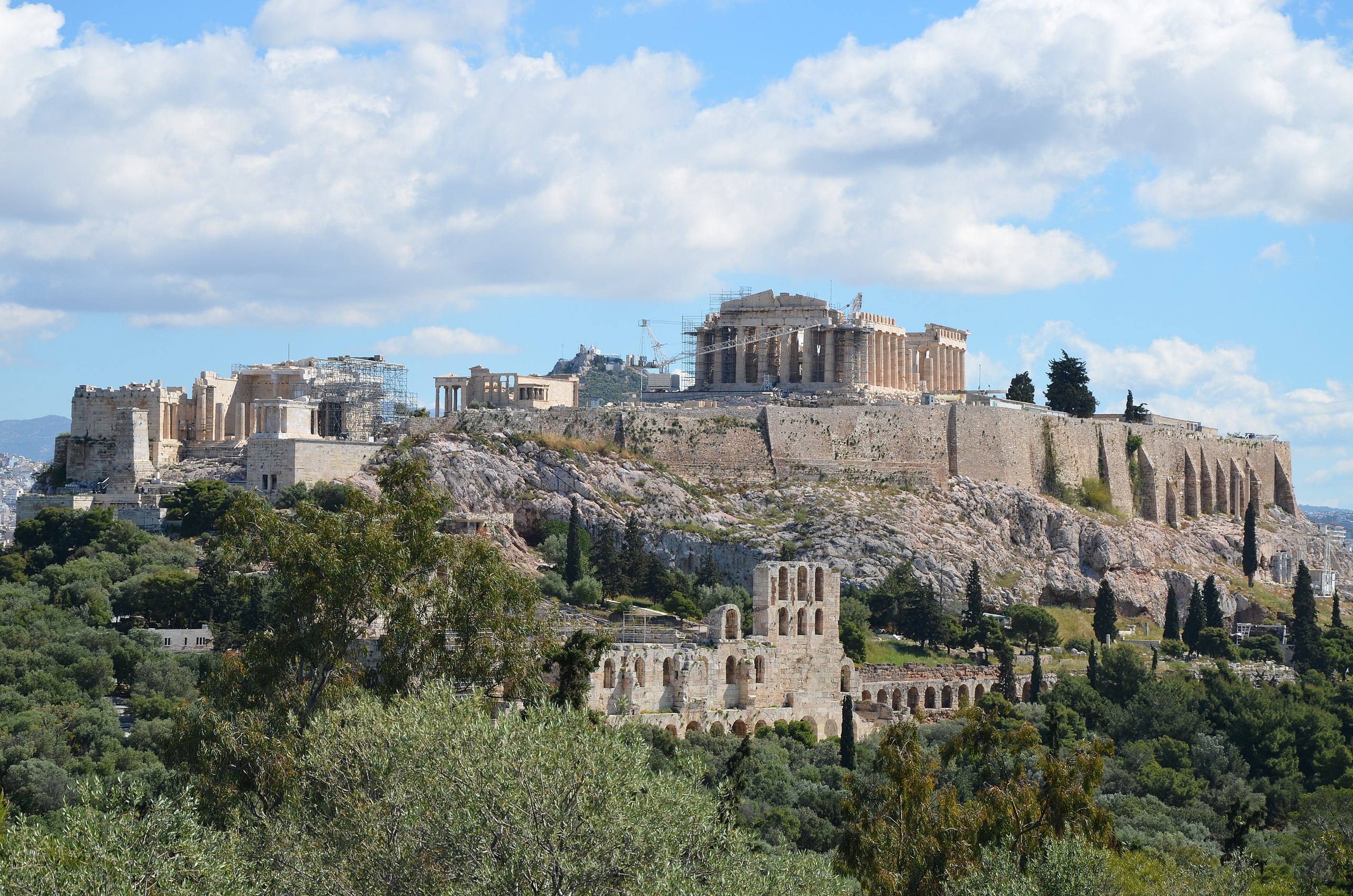
From Athens, Paul headed to Corinth, capital of the Roman province of Acaia in present-day south-central Greece. Here he stayed with the married Christian couple Priscilla and Aquila, who had been exiled by the Roman emperor Claudius in 49-50. In Corinth Paul engaged in prolific speeches that led to many conversions, but he was subject to hostility from groups of local Jews. However, Roman pro-consul Gallio adopted a neutral stance regarding Paul religious mission and decided to let him free.
Together with Priscilla and Aquila, Paul set sail for Syria and reached Ephesus and from here Caesarea, in modern day north-central Israel, and eventually back to Antioch.
Third journey
Paul’s third journey took place between 52 and 57. He first headed back to Galatia and Phrygiato check on the communities he helped set up during his previous trips. He then set sail for Ephesus, an ancient Greek city in present-day Turkey, which at the time was the capital of the Roman province of Asia and home to the famous temple of Artemis-Diana, which was considered one of the seven wonders of the world. Here Paul baptized 12 disciples who had previously received a penitential baptism by John the Baptist, and together with companions he helped evangelize nearly all the local inhabitants.
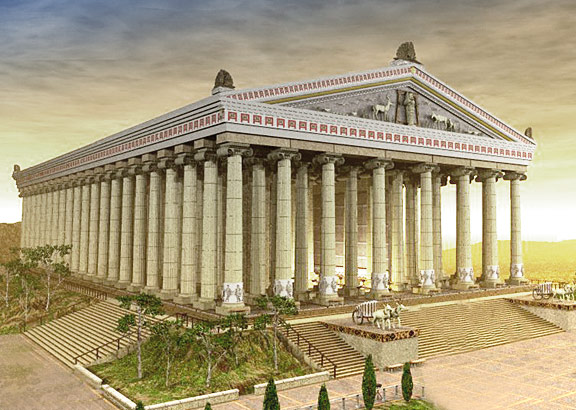
After a winter break in Corinth, Paul headed back to Ephesus, but hostility from local Jews forced him to leave for Antioch, Syria. From here he departed for more Greek cities—including the islands of Lesbos and Samos—and reaches Miletus, in modern-day Turkey.
Here he pronounced his famous speech dedicated to the “Ephesian elders,” in which he recommended that the leaders of the communities he helped found take on his mission and preserve the values of vigilance, disinterest and charity. In 58, Paul decided to head toward Jerusalem, so he set off on an arduous sailing trip that made stops at a new harbor almost each day, including the islands of Kos and Rhodes in modern-day Greece. He finally reached Jerusalem where he stayed with Mnason of Cyprus, one of the people he helped convert on one of his early trips.
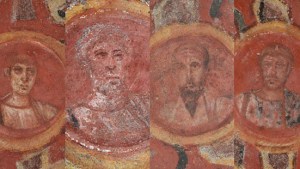
Read more:
Are these the true faces of Saint Peter and Saint Paul?
Paul then visited James, who advised him to talk to the most traditionalist Jews at the Temple. Here Paul was recognized by the Jews of Asian provinces, and once again faced hostility. Claudius Lysias, the local Roman tribune, intervened and put Paul in jail before even knowing that he is a Roman citizen. This was the start of what many refer to as the “Passion Pauli,” in which St. Paul’s dedication to his evangelization mission led to his arrest, beating, torture, and eventual death in Rome at the order of Emperor Nero in 62-64.
Make sure to visit the slideshow below to discover some of the greatest works of art representing the Road to Damascus, the decisive moment in the life of Paul, the Apostle to the Gentiles.
